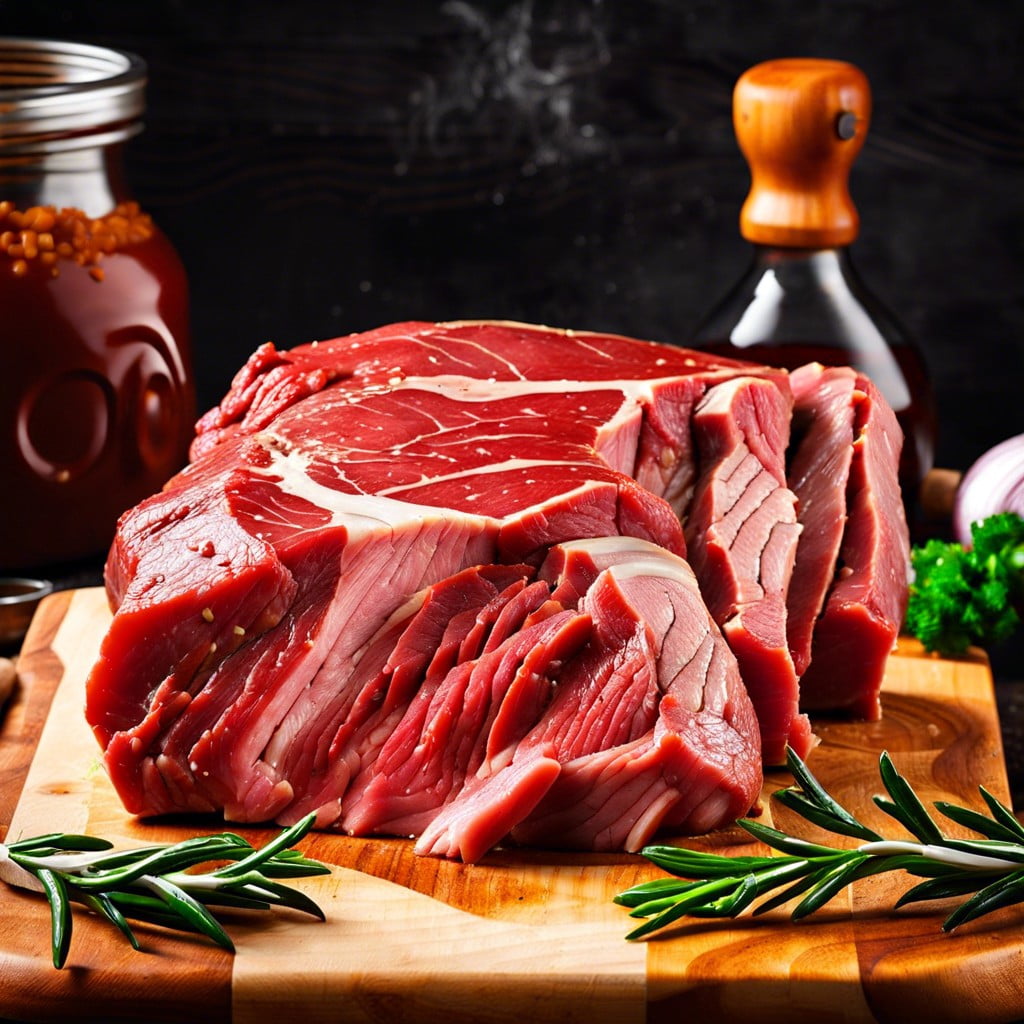Grilling tri-tip to perfection involves understanding the right preparation, temperature control, and timing techniques, which you will learn in the following paragraphs.
Key takeaways:
- Choose a well-marbled, thick cut of tri-tip
- Trim excess fat, season with salt, pepper, and garlic powder
- Grill over high heat, then move to indirect heat
- Monitor temperature and rotate for even cooking
- Test for doneness using a meat thermometer and let rest before slicing
Selection of Tri Tip

When choosing a tri-tip, look for a cut with rich marbling, as this fat ensures succulence and flavor. A uniform shape allows for even cooking. Opt for a cut that is at least an inch thick, avoiding anything too trim. The color should be a deep red with no discoloration. If possible, select a cut that has not been previously frozen, as fresh meat typically retains better texture and moisture. Grass-fed beef offers a denser flavor and typically leaner meat, whereas grain-finished might provide more marbling. Your choice depends on personal preference for taste and texture.
Preparation of Tri Tip
Begin by trimming any excess fat from the surface, leaving a thin layer for flavor and moisture. Pat the meat dry with paper towels, ensuring the spices adhere properly.
Coat the tri tip with a rub of choice; salt, pepper, and garlic powder create a classic base — you can load up on herbs like thyme or rosemary for additional aroma.
For an even seasoning, cover the meat and let it sit in the refrigerator for at least an hour or overnight, which also lets the tri tip ascend to room temperature, guaranteeing a more uniform cook.
Grilling Tri Tip On a Charcoal Grill
Ignite the charcoal and wait until it reaches a high heat, aiming for a temperature around 350-400 degrees Fahrenheit. This will create a robust sear that imparts a rich, smoky flavor onto the tri tip.
Set up two zones on your grill: a direct heat zone for searing and an indirect heat zone for more gentle cooking. After searing each side of the tri tip for approximately 3-4 minutes over the direct heat zone, move it to the indirect heat zone to continue cooking.
Cover the grill to create an oven-like environment which helps in cooking the tri tip evenly. This will also allow for smoke accumulation that further infuses the meat with a desirable barbeque essence.
Monitor the grill temperature by adjusting the air vents. Increased airflow will raise the temperature, while reducing the airflow will lower it. It’s crucial to maintain a consistent temperature throughout the grilling process.
Rotate the tri tip occasionally to promote uniform cooking and prevent overcooking on any one side. This ensures that the heat distribution is even, resulting in a more consistent cook throughout the meat.
Enhance the tri tip’s flavor by basting it with a marinade or seasoning blend during the last few minutes of grilling. This step is optional, but it can add an additional layer of flavor to the meat.
Testing for Doneness
Achieving the perfect level of doneness requires precision. Use a meat thermometer to check internal temperature. Aim for 135°F for medium-rare; 145°F for medium. Remember that carryover cooking will raise the temperature by a few degrees after you take the tri tip off the grill.
Touch is another way to test: the meat should be firm but with a slight give. Always let the meat rest for 10 minutes before slicing to redistribute juices. Cutting against the grain ensures tenderness. Use these guidelines to master doneness every time.
Serving Suggestions
Slice against the grain to ensure tenderness; each cut should be approximately a quarter to half-inch thick.
Accompany the meat with complementary sides like roasted vegetables, garlic mashed potatoes, or a crisp green salad.
A chimichurri or gremolata adds a fresh, herby contrast to the rich flavors of the tri tip.
For wine enthusiasts, a robust red such as a Malbec or Shiraz pairs beautifully, rounding out the dining experience.

